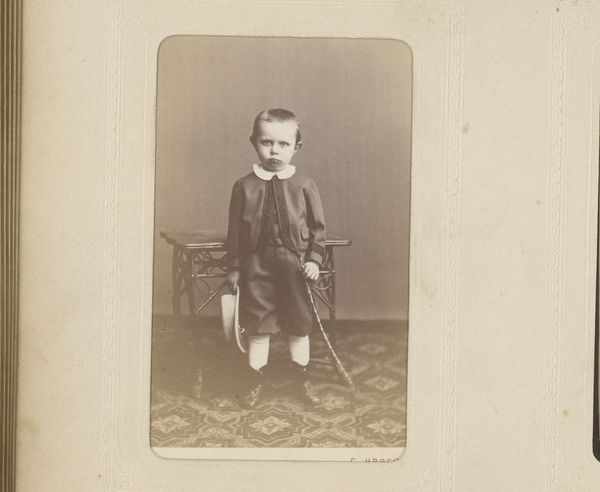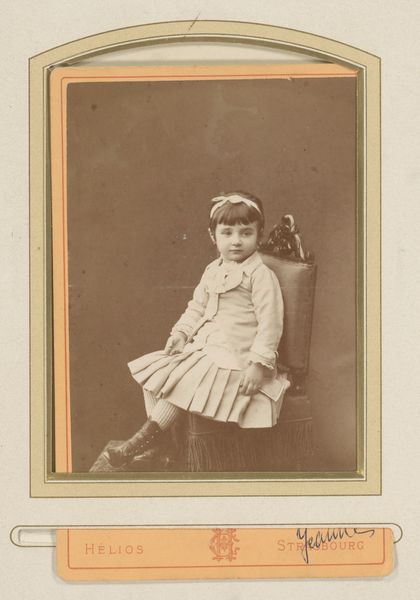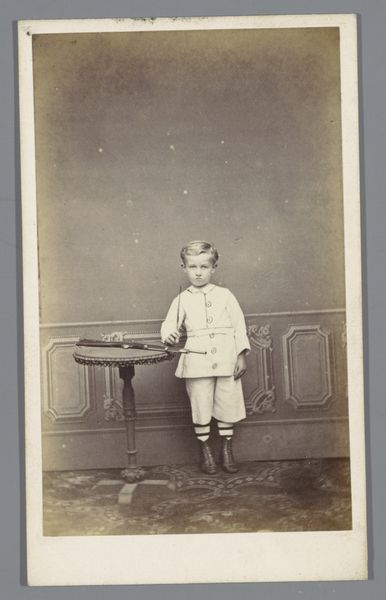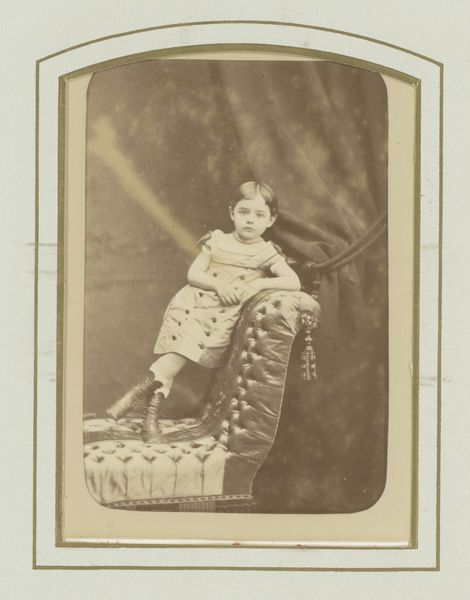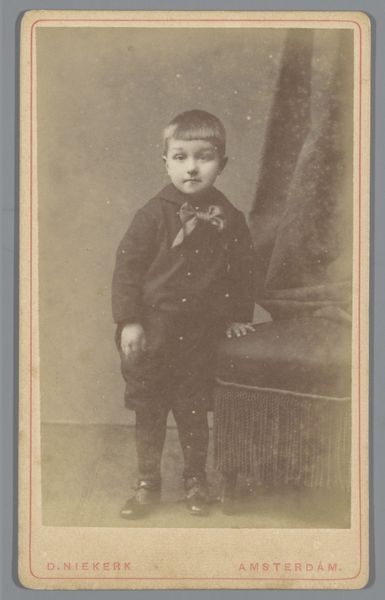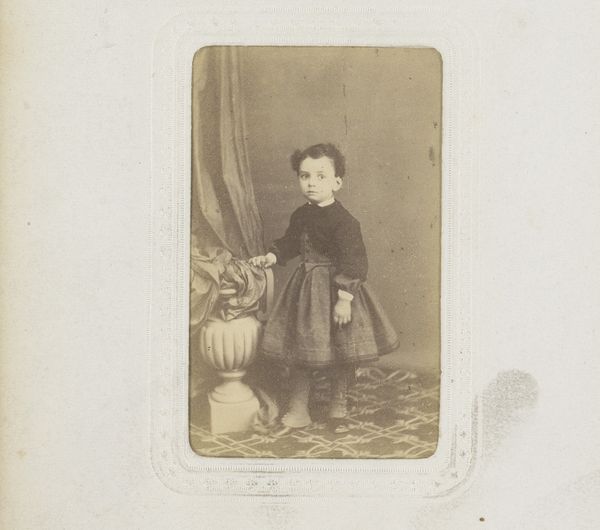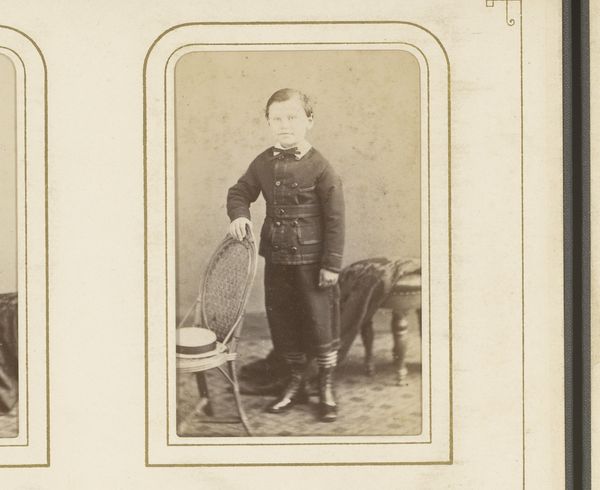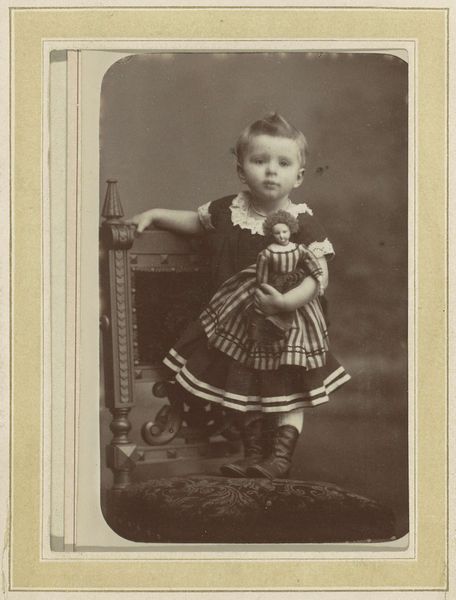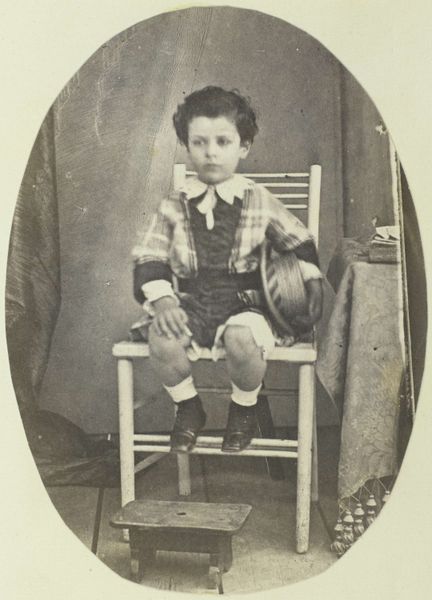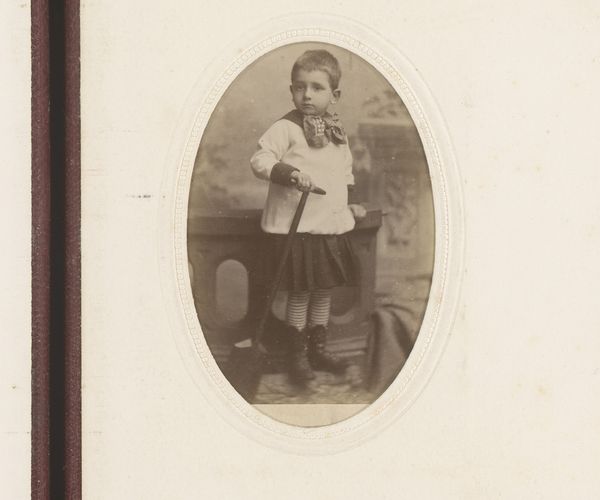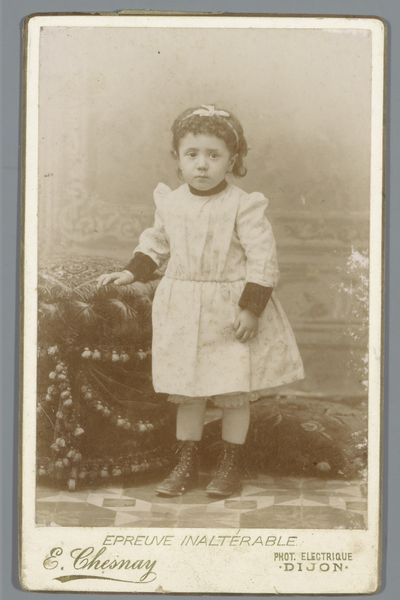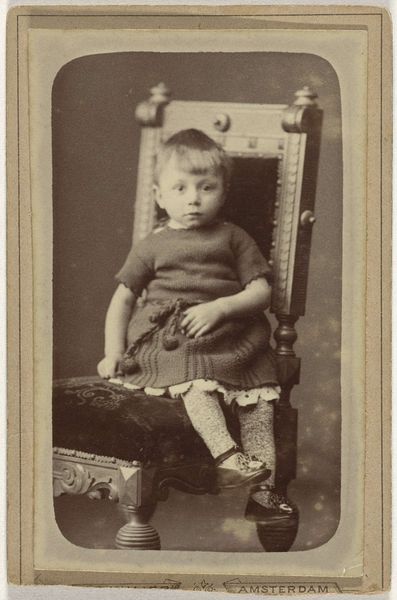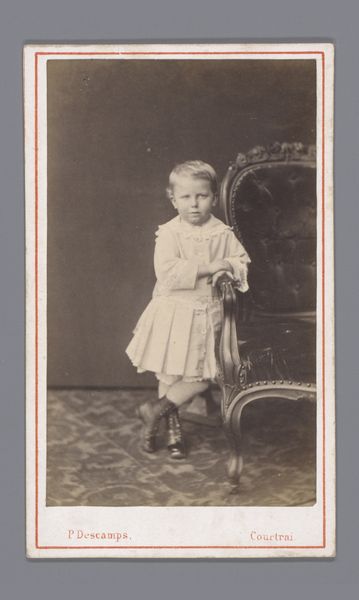
photography, gelatin-silver-print, albumen-print
#
portrait
#
photo restoration
#
boy
#
photography
#
child
#
gelatin-silver-print
#
portrait drawing
#
albumen-print
Dimensions: Image: 17.4 x 13.7 cm. (6 7/8 x 5 3/8 in.)
Copyright: Public Domain
Editor: Here we have Edouard Baldus' 1858 albumen print, "Pierre Bourquelot de Cervignieres". It’s striking how crisp the details are, especially in the tartan fabric. What can you tell me about the materials used and how they speak to the time period? Curator: Looking at Baldus' albumen print, it’s vital to consider the shift in photographic processes and its socio-economic implications. The rise of albumen printing allowed for mass production of photographs, fundamentally altering their accessibility and transforming photography from craft to industry. Note how the meticulous preparation of the glass negative and albumen paper reflect the demands of the burgeoning middle class. Editor: So the choice of materials really opens up a discussion about consumerism in art? Curator: Precisely. The choice of the albumen print was deliberate. Cheaper than earlier processes, albumen prints enabled the democratization of portraiture, bringing images of even young children like Pierre Bourquelot de Cervignieres, within reach of a wider audience. This also standardized the work that was being created, prioritizing function over individual expression of photography as art. Editor: I see, it wasn't just about capturing an image, but about creating a product. It seems that art really became more about its production, circulation, and affordability. Thanks, I have learned much about the social forces present in 1850s art that has redefined my perspective about art creation itself! Curator: Exactly, and remember, by examining the processes and availability of materials we unearth rich narratives about consumption and labour. It offers ways of expanding our vision about photographic portraiture beyond only formal visual analysis.
Comments
No comments
Be the first to comment and join the conversation on the ultimate creative platform.
